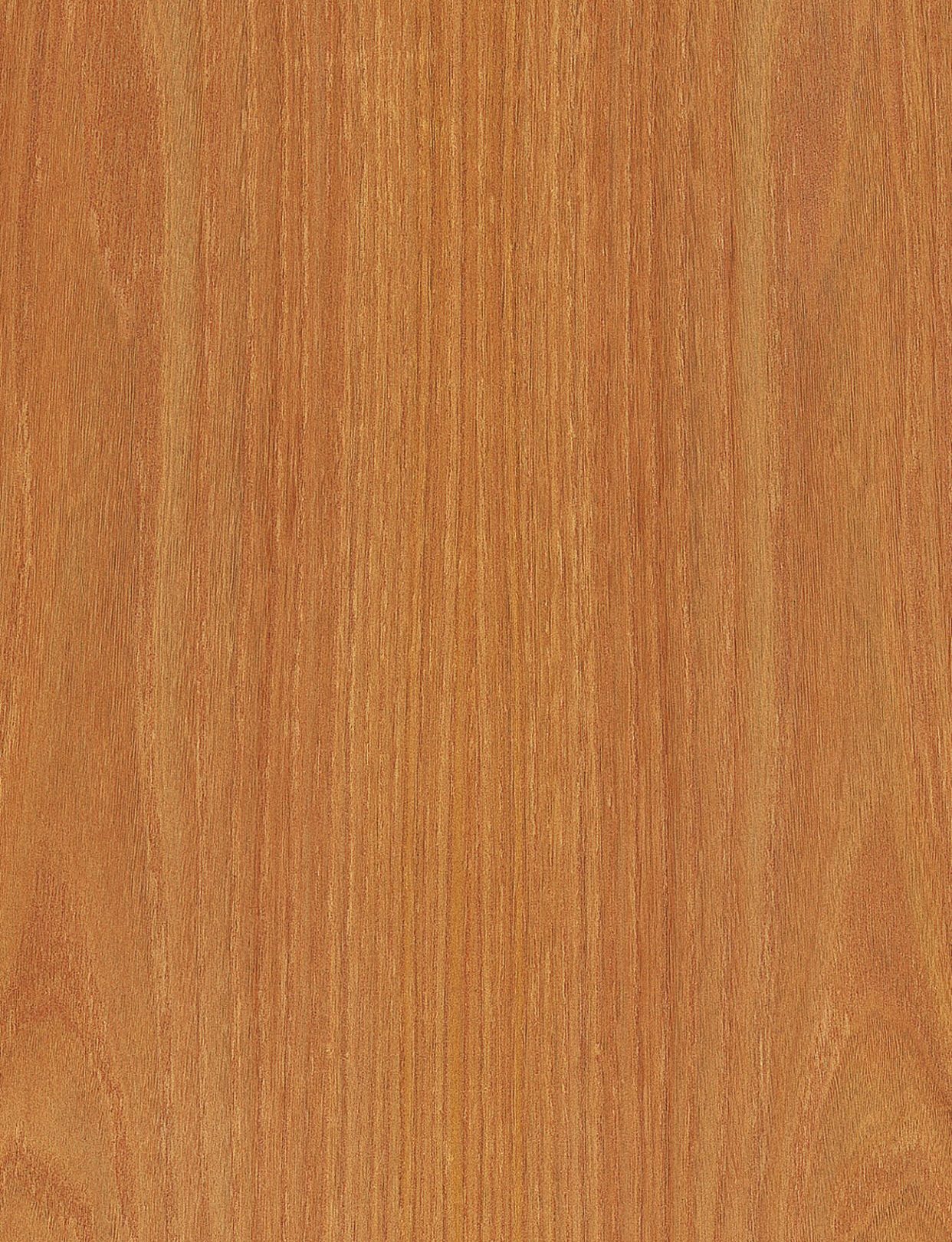
Red Elm
Ulmus rubra, Ulmus americana

Trade Names
Red Elm, White Elm, Slippery Elm
Origin
North America
Range
Canada and USA, particularly central area around the Great Lakes.
Uses
Sliced veneer for faces. In America a special wood for boat building and harbour work.
Properties
The only differentiating feature between “White Elm” and “Slippery Elm” is the slippery inner bark of the latter. This slime is used for medical purposes. Generally the wood is dark brown with a reddish tone. Otherwise the American Elms are very similar to the European Elms, but since these are no longer available for veneer purposes because of the Dutch Elm disease, Red Elm is used as an alternative.
Machining
The slow grown grades are easily machined by hand and tools. Fast grown pieces are difficult to plane and shape.
Seasoning
Drying is slow and must be carried out carefully and gently due to the tendency to check and warp.
Finishing
Normal surface treatments can be applied without difficulty. Filler is recommended because of the coarse texture.
Jointing
All wood joints using nails, screws and glue hold well, but pre-drilling is recommended due to the wood’s tendency to split.

